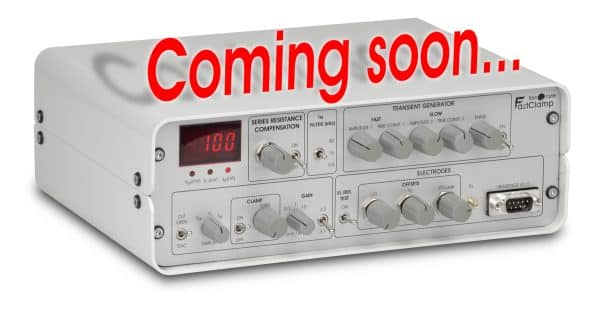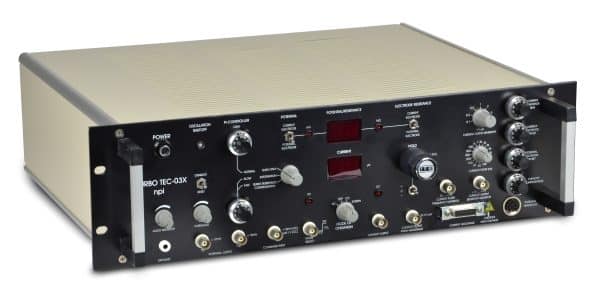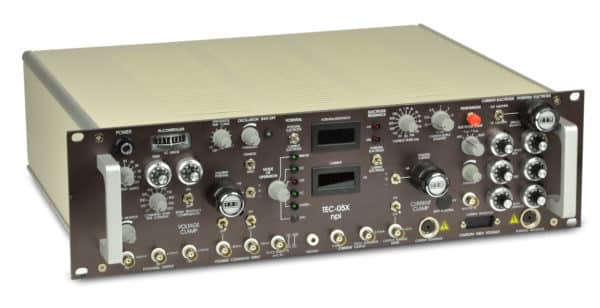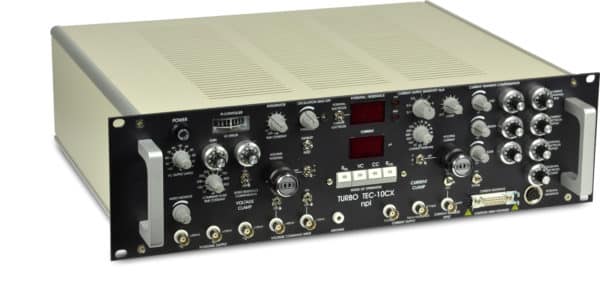TEC electrophysiology amplifiers are designed for two electrode clamp recordings in large cells like oocytes from the African claw frog Xenopus laevis. They can perform voltage clamp and current clamp and one special version (TEC-05X) even has a bridge mode.
npi’s TEC amplifiers have a high-voltage current source which allows fast voltage clamp and current clamp with high currents. The built-in PI controller guarantees quick and accurate responses to command steps.
Check out our tutorial videos about the TEC-03X on YouTube or in our knowledge base.
Find out how to use the TEC-03X with pClamp and Digidata.
More information about two electrode voltage clamp in oocytes in our knowledge base.




Large cells have a large membrane surface and thus a low resistance over the whole membrane. The two-electrode voltage clamp technique (TEVC) separates the detection of the potential from the injection of currents by using distinct electrodes and headstages for each. This way both parameters can be recorded and controlled precisely.
The exact maximum current depends on the resistance of the current electrode and is calculated by Ohm’s law: the current headstage of the TEC-03X/TEC-10CX has a maximum output of ±150 V. A typical current electrode has ~1 MΩ, the Oocyte in a high conducting state has a few kΩ. The maximum current in this case is ~150 µA.
The TEC two electrode amplifiers use a high-voltage current source in the current headstage and a differential amplifier in the potential headstage. This way the current is measured “en route” to the current electrode. This configuration eliminates artifacts induced by microelectrodes. The current injecting electrode is fully compensated and the introduction of a virtual ground is not necessary.
The TEC-05X with its low voltage headstages is used for various types of large cells. This amplifier is used for neuromuscular junction recordings, muscle cells, vertebrate ganglion and other similar approaches.

Our dedicated team has years of industry and laboratory experience.
From complex technical challenges to tailored product recommendations,
our application scientists are ready to support your needs with hands-on expertise.